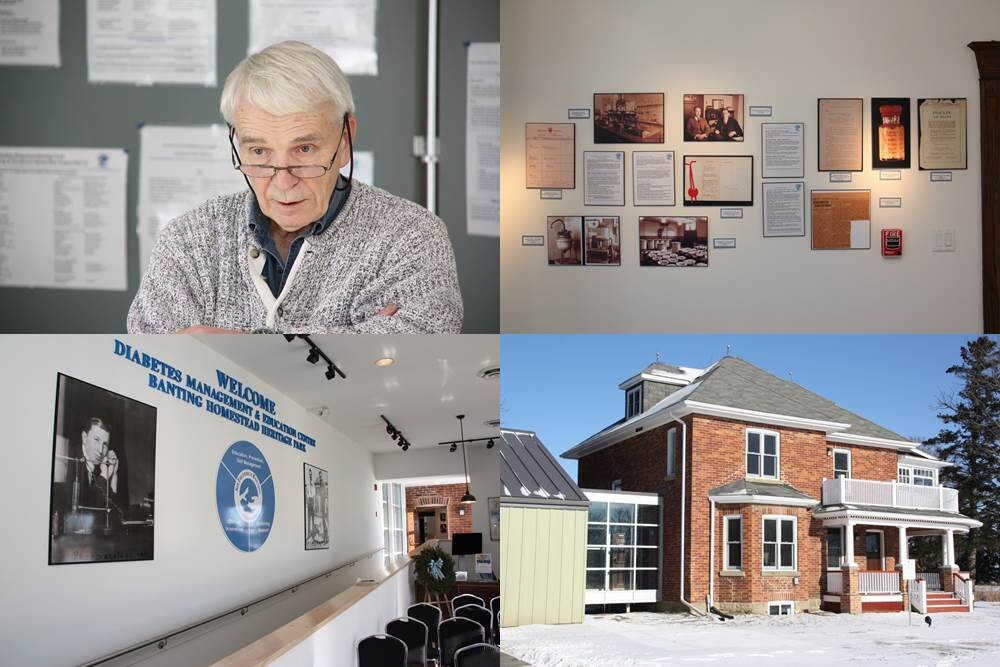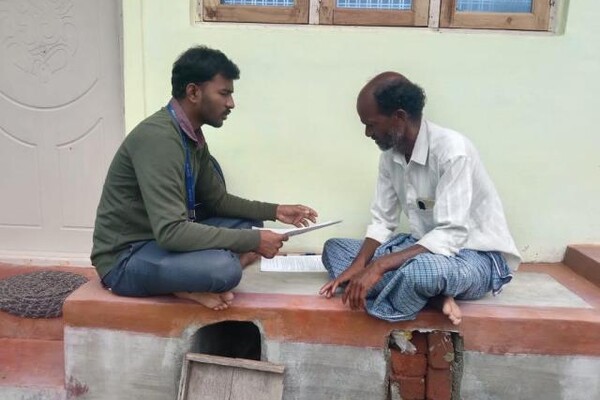Mobile Menu
- Education
- Research
-
Students
- High School Outreach
- Undergraduate & Beyond: Community of Support
- Current Students
- Faculty & Staff
- Alumni
- News & Events
- Giving
- About

Ninety-two years ago this week, Leonard Thompson received the first successful injection of insulin for diabetes. The treatment saved Thompson, then 14 years old, from certain death — he weighed just 65 pounds and had been drifting in and out of a diabetic coma.
Frederick Banting and his colleagues at the University of Toronto discovered insulin, which has saved millions of lives and is essential medicine for many diabetics today. To honour his story, the Sir Frederick Banting Legacy Foundation recently restored the long-neglected site of Banting’s birth in Alliston, Ontario.
David Sadleir is the Foundation’s President. The former Professor in the Department of Mechanical and Industrial Engineering and U of T Vice President has helped turn the historic property into a diabetes management and education facility, and a heritage park that preserves Banting’s legacy.
Sadleir spoke with Faculty of Medicine writer Jim Oldfield about diabetes, the challenges of fixing the Banting homestead and plans for the future.
What do you want people to know about the discovery of insulin?
It’s a classic but extraordinary scientific story. The discovery came at the end of 50-year trail of scientific inquiry. In 14 months, Banting and his team — a group with complementary skills, and that was critical — came up with a very rapid solution to a very horrible problem. That’s not unique in the annals of science, but it sure is special. And, it took a coordinated effort by many folks to bring this discovery to patients. The University of Toronto worked with Connaught Labs to mass-produce insulin, but to help meet the early demand, they brought in Eli Lilly. In 1922, the cost for 100 units of insulin was equivalent to $130 a week. By 1942 it was down to $2.60.
The main purpose of the Banting Legacy Foundation is to fight diabetes. How will you do that?
We decided we could make a difference with a focus on youth, prevention and self-management. Diabetes in children is an epidemic. For those who manage it well, the disease is not a big deal, but many teenagers have trouble doing that — especially as they transition from the paediatric to adult health care system at age 18. So with our outreach team partners at Stevenson Memorial Hospital and Southlake Regional Health Centre, we’re seeking new models of transition care. With the Department of Pediatrics at McMaster University, we’ve launched supporting lectureships, conferences and postdoctoral awards that address this issue and help build capacity in the system. We’re also hosting classes for diabetics on disease prevention and management, and we just launched a tour program for high school students — I’m really happy about that.
What challenges have you faced?
Well, Murphy's law has been hard at work here. The historical society that took over the property from the Banting family about 20 years ago was unable to sustain it. The local community, proud of the Banting legacy, was upset by the visible mess. It took the Town of New Tecumseth years of legal wrangling and political pressure to regain control of the property, before we could get started. Then the renovations for the farmhouse were technically challenging and expensive. We had to provide barrier-free access while preserving the historical features — our solution was the adjacent structure that houses a ground-level lobby, washrooms and wheelchair ramp. Pulling together the artifacts and memorabilia was difficult, but the New Tecumseth Public Library, Museum on the Boyne and, more recently, U of T’s Thomas Fisher Rare Book Library came to our rescue last fall — just in time for the exhibit ribbon-cutting and World Diabetes Day.
What are your next steps?
We want to extend our reach through technology. We plan to build an interactive digital learning wall to remotely access expert care and information. We want a portable kiosk version of the wall, to make the content available to schools. And we plan to install a telemedicine facility to make our diabetes classes more widely available. We really see the park without geographic limitations. Finally, this year, we expect to open the site to the public on weekends. We’ve had tourists stop by — a couple from France, one from Utah. We’ve had buses of Chinese, in part due to our proximity to Bethune Memorial House in Gravenhurst. We knew we had a winner, we just needed to be patient.
The Banting Homestead Heritage Park is now open for school and community group tours. The Foundation accepts donations here.

